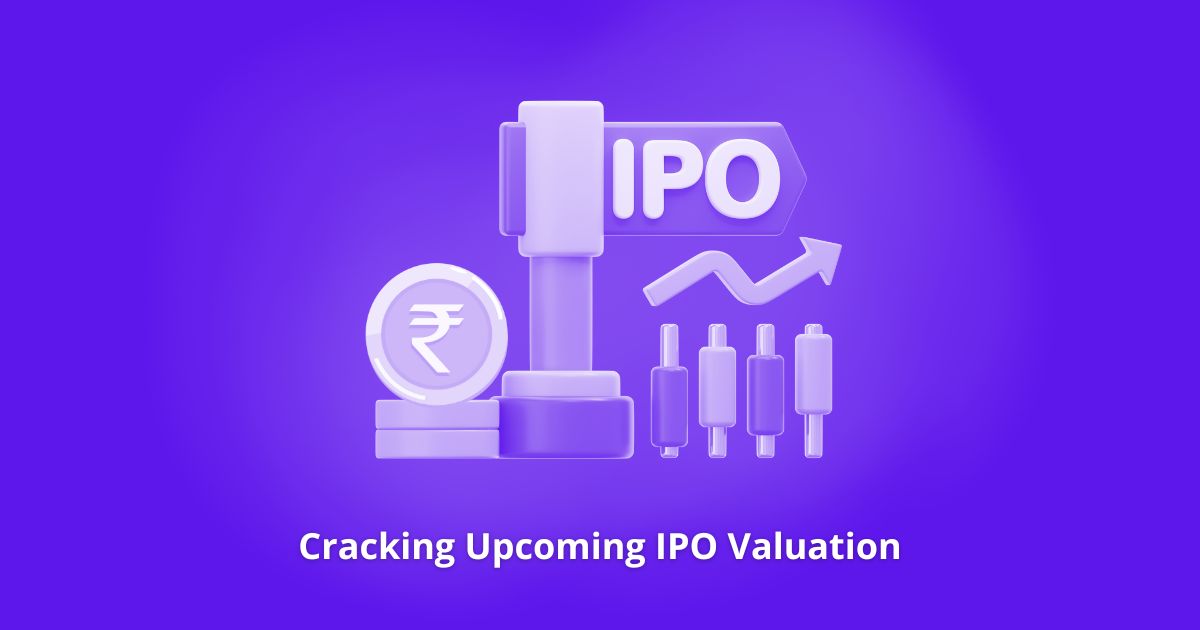Disclaimer:
The information provided here is intended to be informational and educational and does not represent investment advice, financial advice, or any suggestion to buy or sell any security, including an IPO. Investors are encouraged to do their own research and seek advice from their own financial advisors before any investment. The views expressed are made on the basis of publicly available information and personal analysis and are subject to change.
Initial public offerings are among the most thrilling occasions in the securities exchange, offering financial backers an opportunity to purchase portions of an organization before it begins exchanging freely.

With various upcoming ipo declarations, understanding Initial public offering importance and valuation measurements is significant for settling on informed speculation choices.
This article separates the key factors that can assist financial backers with assessing an Initial public offering’s actual worth and decide if it’s a promising an open door.
What is Initial Public Offering (IPO) Meaning?
An Initial public offering, or First sale of stock, is the cycle through which a privately owned business turns out to be public by offering its portions to the overall population. Organizations choose an Initial public offering to raise capital for extension, reimburse obligation, or increment their market permeability. For financial backers, Initial public offerings present chances to put resources into a business at the beginning phase, possibly procuring huge increases if the stock performs well.
Nonetheless, not all Initial public offerings succeed. Some introduce with a bang, while others burn out because of unfortunate essentials or overvaluation. This makes it fundamental for financial backers to survey an impending Initial public offering completely before committing their capital.
Key Metrics to Evaluate an Upcoming IPO
To pursue a very educated speculation choice, financial backers ought to investigate the accompanying valuation measurements:
1. Cost-to-Income (P/E) Proportion
The P/E proportion looks at an organization’s portion cost to its income per share (EPS). A lower P/E proportion might show an underestimated stock, while a higher proportion recommends overvaluation. While dissecting an impending Initial public offering, look at its projected P/E proportion to that of comparative public corporations to decide whether the cost is sensible.
2. Cost-to-Deals (P/S) Proportion
For organizations that are not yet beneficial, the P/S proportion can give an understanding of valuation. It is determined by partitioning the organization’s market capitalization by its all-out income. A lower P/S proportion is by and large ideal, yet it ought to be contrasted and industry peers for setting.
3. Endeavor Worth to EBITDA (EV/EBITDA)
The EV/EBITDA proportion surveys an organization’s productivity compared with its venture esteem (market cap + obligation – cash). A lower EV/EBITDA proportion proposes that the Initial public offering may be underestimated, making it an alluring speculation.
4. Obligation to-Value (D/E) Proportion
An organization with high obligations might battle with monetary security. The D/E proportion estimates the extent of obligation used to fund an organization’s resources contrasted with value. A lower D/E proportion shows an all the more monetarily stable organization, which is a positive sign for Initial public offering financial backers.
5. Return on Value (ROE)
ROE estimates how an organization creates benefits from investors’ value. A high ROE shows solid monetary well-being and effective utilization of financial backer assets. Looking at the ROE of a forthcoming Initial public offering with industry friends can give knowledge into the organization’s benefit.
6. Income Development and Future Possibilities
Assessing past and projected income development is fundamental. Organizations with predictable income and benefit development are for the most part better situated for progress post-initial public offering. Financial backers ought to inspect verifiable budget summaries and future development appraisals to decide the Initial public offering’s true capacity.
7. Market Interest and Cutthroat Situating
An IPO prosperity relies fundamentally upon market interest and the organization’s cutthroat situating. If an impending Initial public offering has a place in a quickly developing area with high shopper interest, its possibilities performing great increment. Also, grasping the organization’s upper hands (e.g., remarkable innovation, brand strength, or market authority) can assist with evaluating its drawn-out potential.
8. Secure Period and Insider Selling
The lock-up period is the time period during which organization insiders (pioneers, chiefs, and early financial backers) are limited from selling their portions after an Initial public offering. A short lock-up period or weighty insider selling not long after the Initial public offering could demonstrate an absence of trust in the organization’s future development.
Key Metrics to Evaluate an Upcoming IPO
While certain Initial public offerings present worthwhile open doors, others might accompany gambles.
Financial backers ought to be wary of:
-
Publicity-driven valuations: Organizations that produce buzz yet need strong financials might be exaggerated.
-
Absence of productivity: A few Initial public offerings are sent off despite persevering misfortunes, making future benefits questionable.
-
Forceful utilization of Initial public offering continues: If an organization intends to utilize Initial public offering assets for purposes like reimbursing over-the-top obligations as opposed to development drives, it could flag monetary misery.
-
Feeble corporate administration: Initial public offerings with unfortunate administration designs or high pioneer control might present dangers to minority investors.
Conclusion
Putting resources into an impending Initial public offering requires a cautious assessment of central measurements, monetary well-being, and industry patterns. Understanding Initial public offering meaning and applying valuation methods can assist financial backers with settling on informed decisions. While certain Initial public offerings can yield significant returns, others might be overhyped or need solid basics.
-
To augment achievement, financial backers ought to:
-
Direct intensive examination and contrast valuations and industry peers.
-
Dissect budget summaries and income development possibilities.
-
Consider the organization’s drawn-out potential and market situation.
-
Be wary of unreasonable promotions and ridiculous valuations.
By applying these systems, financial backers can without hesitation explore the Initial public offering market and distinguish top-notch open doors for long-haul gains.